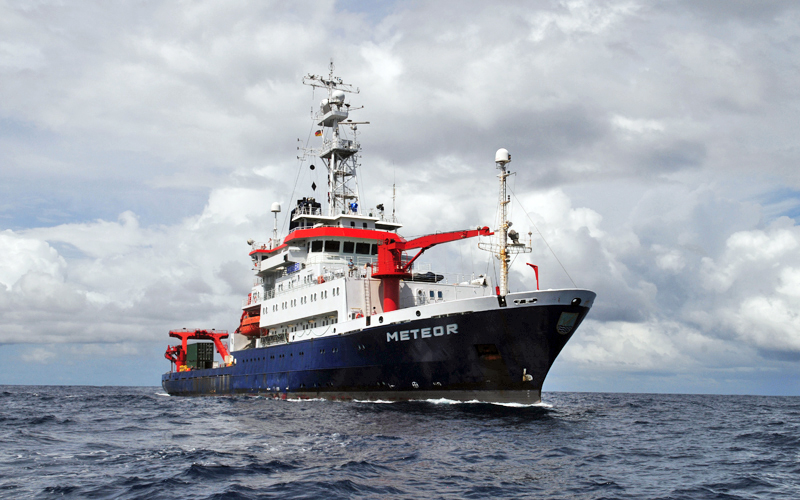METEOR M170
- Area:
- Mid-Atlantic Ridge
- Time:
-
11.01.2021 - 10.02.2021
- Institution:
- GEOMAR
- Chief scientist:
- Ingo Grevemeyer
Fracture zones were recognized to be an integral part of the seabed long before the theory of plate tectonics was established. Later, plate tectonics linked fracture zones to oceanic transform faults, suggesting that they are the inactive and hence fossil trace of transforms.
Yet, scientist spend little time surveying them in much detail. Recent evidence suggests that the traditional concept of transform faults as being conservative (non-accretionary) plate boundary faults might be wrong. Instead, numerical modelling results suggest that transform faults seem to suffer from extensional tectonics below their strike-slip surface fault zone and a global compilation of legacy bathymetric data suggest that ridge-transform intersections seem to be settings of magmatic activity, modifying the lithosphere and burying the transform valley before it passes into the fracture zone region.
Here we like to test both hypotheses by collecting a suite of new data from two transform faults offsetting the Mid-Atlantic Ridge between 47°N and 50°N, including a pilot study revealing the state-of-stress derived from micro-earthquakes and bathymetric and side-scan sonar imagery as well as geological sampling and seafloor video observations to evaluate magmatic processes.



